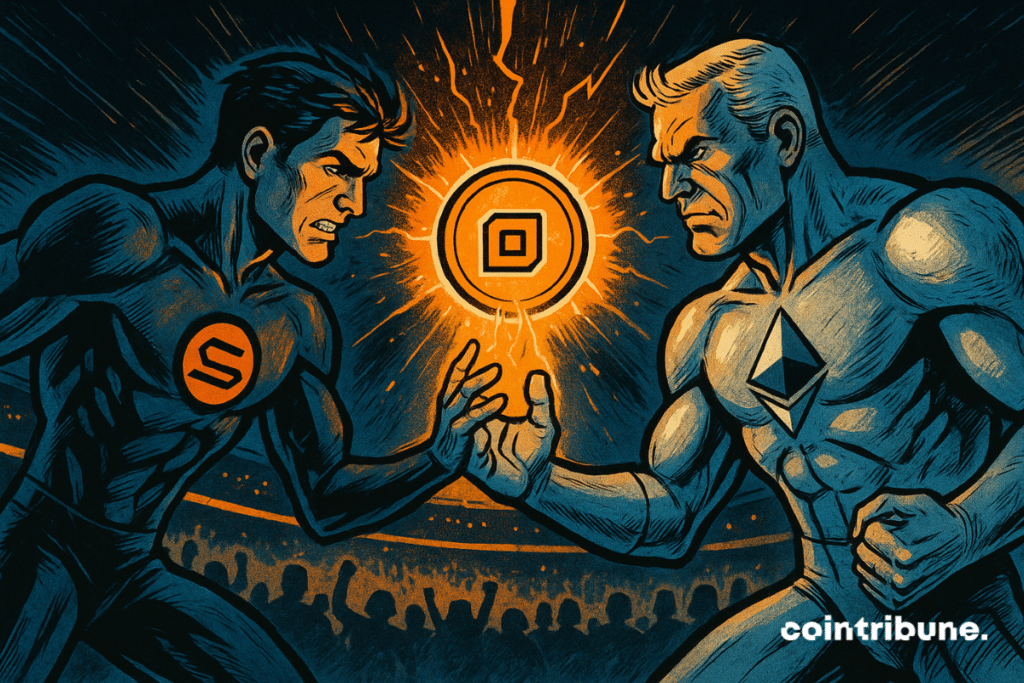Solana Surges Past Ethereum in 2025’s Tokenized Asset Race – The Scalability Showdown
Move over, Ethereum—Solana just flipped the script. The once-dominant smart contract platform is now eating dust as SOL's blistering speed and laughably low fees carve out a new king of tokenized assets. Here's how the underdog became the top dog.
Speed Wins. Always.
While Ethereum's gas fees still make hedge funds wince, Solana's throughput hit warp speed in 2025. Thousands of tokenized real estate deals, carbon credits, and even meme ETFs now flow through SOL's rails daily. The network didn't just scale—it made ETH look like dial-up.
The Institutional Pivot
Wall Street's sudden love affair with SOL wasn't altruism. When BlackRock tokenized its first private equity fund on Solana last quarter, the writing was on the blockchain. TradFi finally found a chain fast enough to keep up with their algo-trading addictions.
Ethereum's Layer 2 Maze
ETH maximalists will scream 'But our L2s!'—except nobody wants a fragmented ecosystem where your assets get stuck between Arbitrum and Optimism like a DeFi version of airport layovers.
The Verdict?
Solana didn't just overtake Ethereum—it exposed how bureaucratic chains become when they prioritize committees over code. Though let's be real: both networks will be mining fees from this tokenized gold rush while retail investors front-run the next shiny object.

In brief
- The value of RWAs on Solana has surged by 218% in 2025, reaching $553.8 million.
- Ethereum maintains its dominance with $7.7 billion, but only grows by 81%.
- Tokenized Treasury bonds from Ondo Finance drive this growth on Solana.
Solana catches up with Ethereum in the tokenized asset market
Since January 2025, Solana has shown remarkable performance. Its tokenized asset value has tripled, jumping 218% to reach $553.8 million, according to RWAxyz. This growth vastly overshadows Ethereum’s.
Ethereum remains the undisputed leader with $7.7 billion in tokenized assets. But its growth of 81% seems modest against Solana’s sprint. This difference marks a turning point in institutional investors’ choices.
Why is Solana so attractive? Its negligible transaction fees and ultra-fast settlements attract traditional financial players. These technical advantages make all the difference for high-volume applications.
The latest report from research firm Messari confirms this trend:
Yield-bearing RWAs are the most significant and fastest-growing segment in Solana’s RWA landscape.
The acceleration is intensifying even, with a 22% increase just last month.
SOLUSDT chart by TradingViewOndo Finance, the catalyst for this revolution
Ondo Finance drives this transformation. Indeed, its two flagship products, OUSG and USDY, represent $248 million. They thus control 60% of the RWA market on Solana.
How does ONDO operate? The company relies on BlackRock’s BUIDL, the giant of tokenized funds with $2.8 billion. OUSG uses digital US Treasury bonds. USDY offers a stablecoin that generates interest through government bonds.
This “two-in-one” formula is a hit with institutional investors. They benefit from the strength of U.S. government assets and the flexibility of DeFi protocols. Gains far exceed traditional bank savings accounts, a major asset when rates rise.
Furthermore, the ecosystem is enriched with ONyc, a reinsurance pool connected to Ethena’s sUSDe. This diversification boosts Solana’s attractiveness for traditional financial players.
Solana is shaking up the established order in RWAs. Certainly, ethereum keeps its crown, but sees its lead melt in the face of its rival’s technical efficiency. This battle could reshape the decentralized finance landscape.
Maximize your Cointribune experience with our "Read to Earn" program! For every article you read, earn points and access exclusive rewards. Sign up now and start earning benefits.

